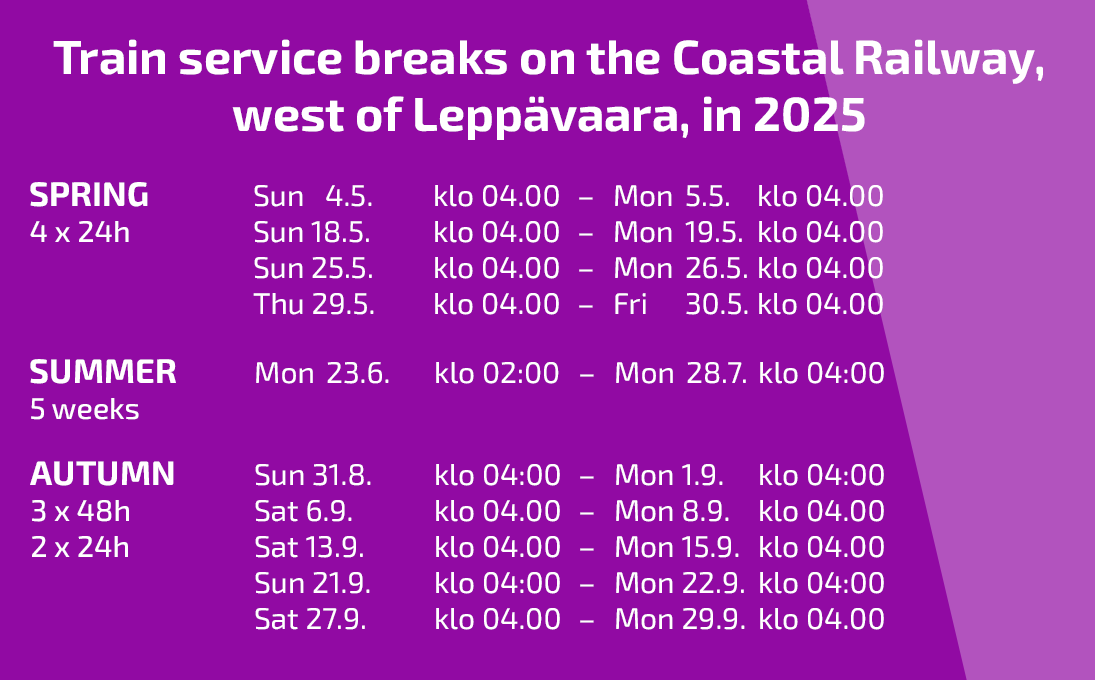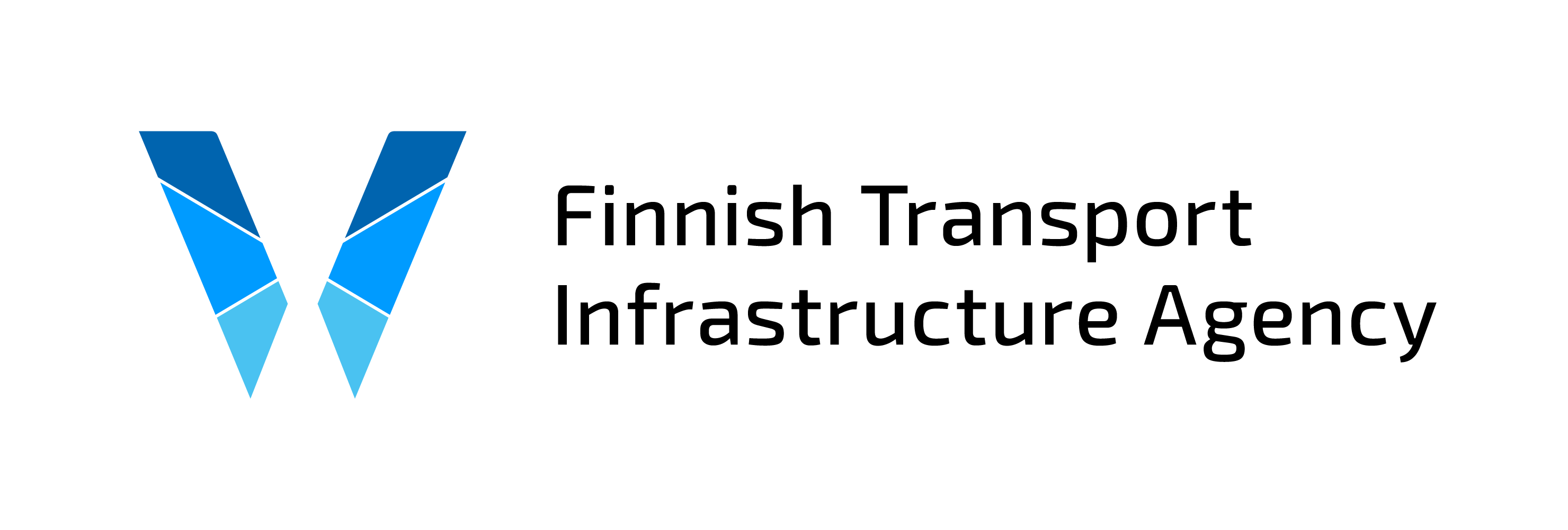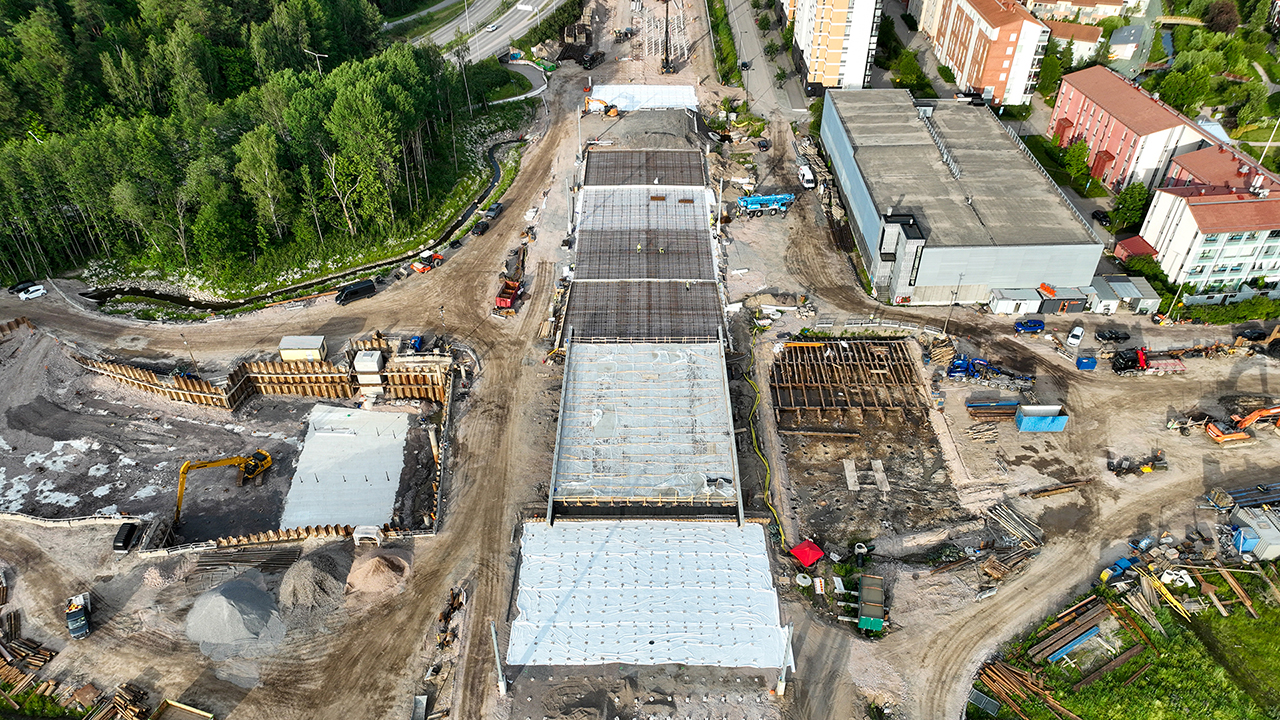Train service breaks on the Coastal Railway in 2025
Traffic interruptions will take place in the spring, summer and autumn, and they will affect commuter train traffic in the Helsinki metropolitan area and long-distance rail service between Helsinki and Turku. After Midsummer, rail service on the western side of Leppävaara will be interrupted for five weeks, as it was last year. The interruptions in service are necessary to allow work in the project to progress.

Yleisötilaisuudet maaliskuussa 2025
Järjestimme alueurakoittain kolme etäyhteydellä pidettyä yleisötilaisuutta maaliskuussa 2025. Tutustu yleisötilaisuuksien esityksiin sekä tilaisuudessa esitettyihin kysymyksiin Yleisö- ja mediatilaisuudet -sivulla.
Watch the video to see how the project's new pair of tracks and street connections relate to the existing tracks and other routes.
3D model of Espoo Rail Line project
The link below allows you to dive into the 3D model of the project and move along the track across the entire track section.
Scope of the project
In the agreement on land use, housing and transport (MAL) for the Helsinki region, the state and municipalities have agreed that the state will launch the implementation of the Leppävaara-Kauklahti section of the Espoo Rail Line in accordance with the railway plan.
The railway plan describes the construction of two additional tracks next to the current tracks between Leppävaara and Kauklahti. In the final situation, the two southernmost tracks will be used for frequent urban rail traffic and the two northernmost tracks for faster commuter traffic and long-distance traffic in the Turku direction. The plan presents the development of the traffic operating points of Kilo, Kera, Kauniainen, Koivuhovi, Tuomarila, Espoo Centre and Kauklahti, links to other land use plans and planned park-and-ride facilities.
The socio-economic impacts of the project have been presented in the project appraisal of the Espoo Rail Line. Its benefit-cost ratio is 0.88.
Design maps
Below are the general maps of the project’s construction plan and design maps from Leppävaara to Kauklahti.
- General map, construction plan from Leppävaara to Koivuhovi (762 KB)
- General map, construction plan from Koivuhovi to Kauklahti (1.2 MB)
- Design maps from Leppävaara to Koivuhovi (6 MB)
- Design maps from Koivuhovi to Kauklahti (4.4 MB)
In accordance with the railway plan, the maps are displayed north-down, south-up.
Impacts of the project
The Espoo Rail Line will improve the infrastructure capacity of the Helsinki-Turku rail connection, enhance the punctuality of traffic and reduce disruptions on the line section. In the efforts to improve the Helsinki-Turku rail connection, the Espoo Rail Line is the first construction phase, regardless of whether it is decided to improve the current track or to promote the implementation of the Espoo-Salo direct line.
An environmental impact assessment was prepared in connection with the railway plan. It examined, among other things, the project’s impacts on the landscape, nature and people and the impact areas of noise and vibration. A separate transport infrastructure architecture report presents a preliminary plan for the uniform appearance of the city rail link and, for example, the shape and colours of platform shelters. In addition to the railway plan, a so-called quality cycling corridor has also been planned in the vicinity of the track.
Schedule and costs
The railway plan was approved in 2015, and its period of validity was extended until the end of 2023. The launch of the implementation is based on the MAL agreement for 2020–2031 between Helsinki region and the state. The railway project will be implemented as a jointly funded project with the cities of Espoo and Kauniainen. The implementation of the Espoo Rail Line began with construction planning in early 2021. The project is estimated to be completed in 2029.
The total cost estimate for the project is approximately EUR 330 million.
In connection with railway construction, approximately EUR 120 million will be used for implementing separate projects (i.e. bridge and road projects) of the cities of Espoo and Kauniainen, and the quality cycling corridor Rantaradanbaana. In connection with the project, Rantaradanbaana will be implemented for the section planned by the cities from Leppävaara to Espoo Centre.
You can also follow the progress of the project on Facebook at: https://www.facebook.com/espoonkaupunkirata
Project on Facebook and Flickr

The Finnish Transport Infrastructure Agency is solely responsible for the content of this publication. It does not necessarily reflect the opinion of the European Union.

